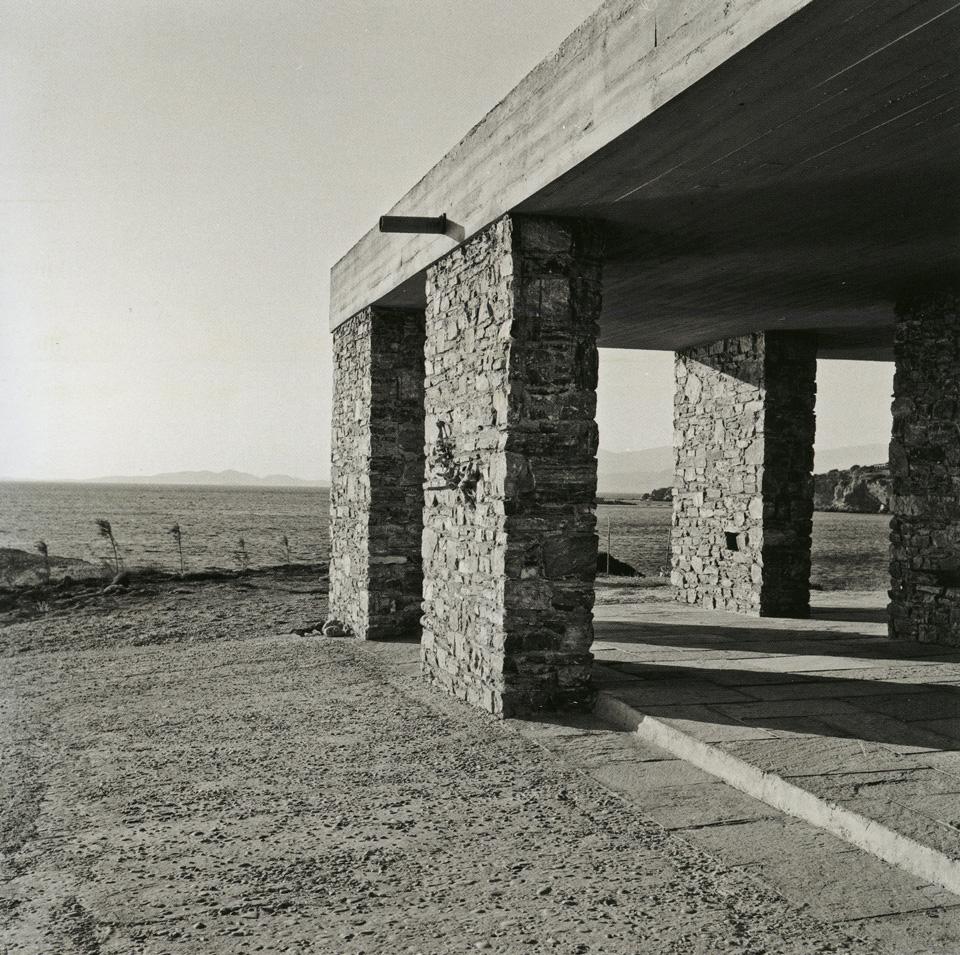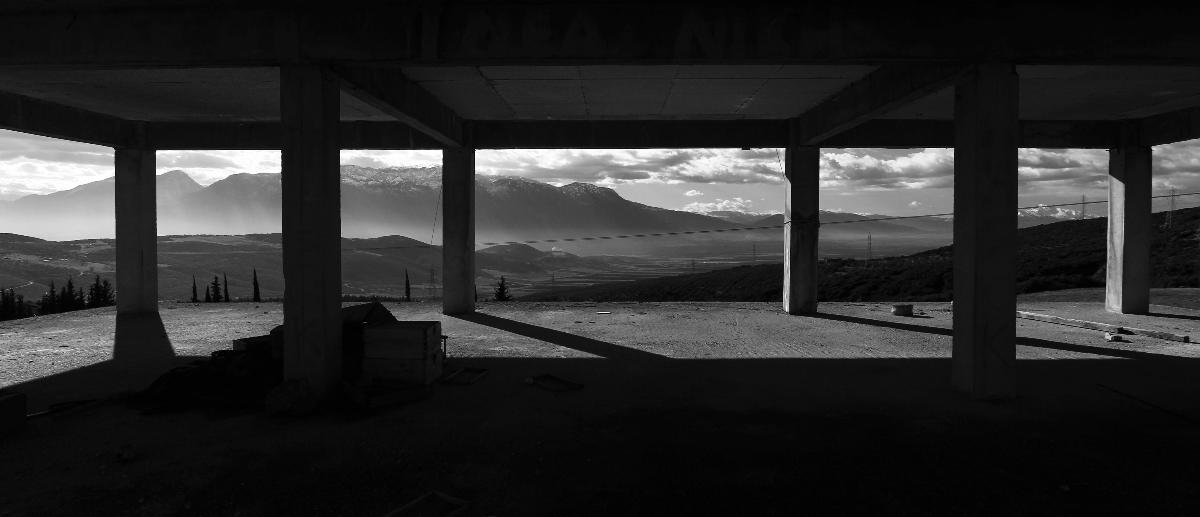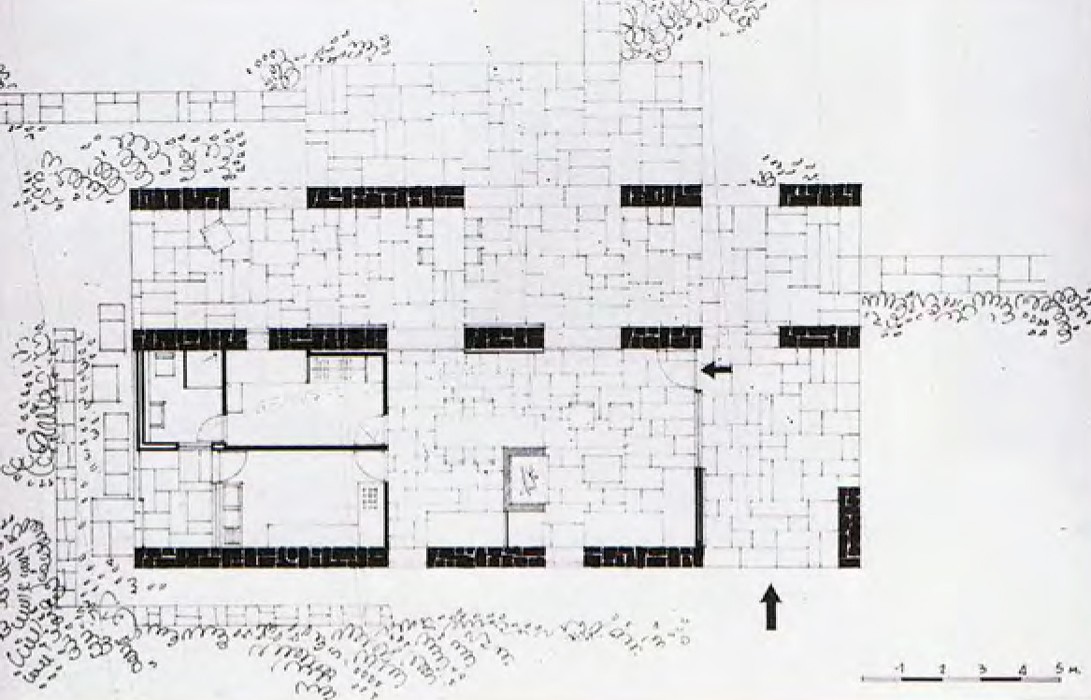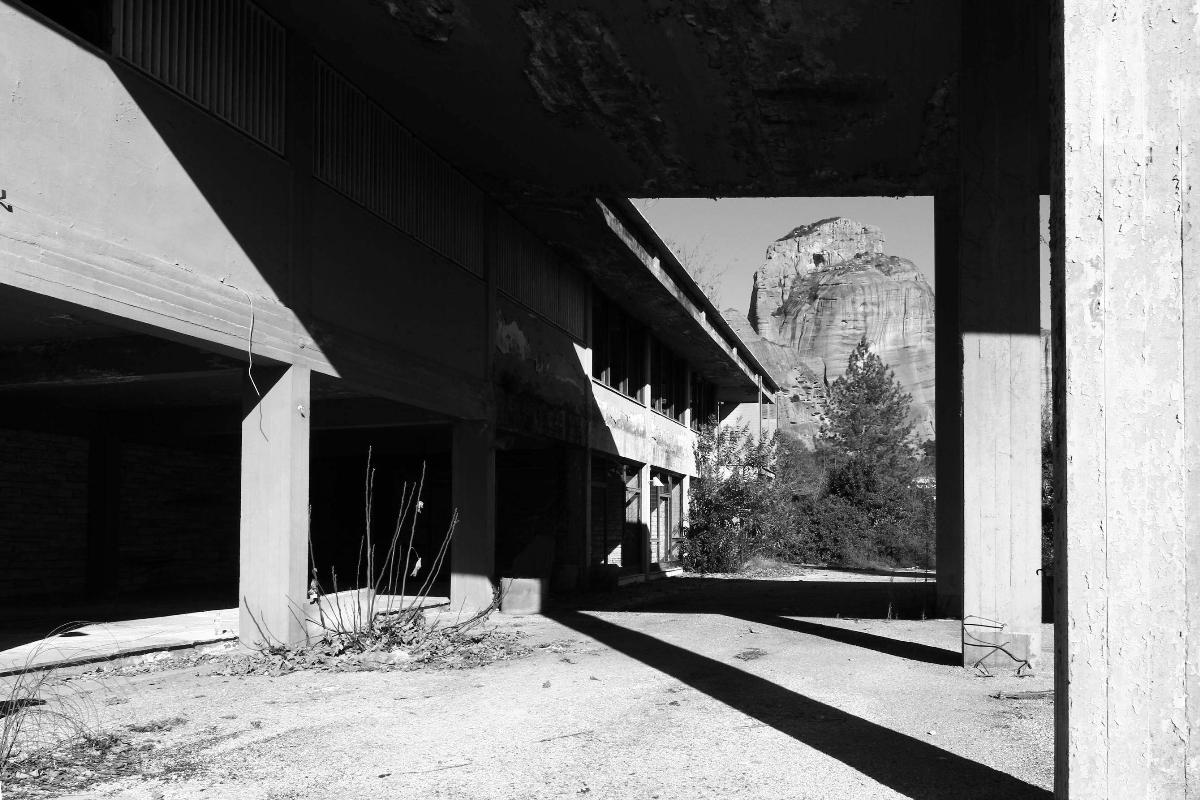Aris Konstantinidis
Aris Konstantinidis (Greek Άρης Κωνσταντινίδης, born March 4, 1913 in Athens, † September 18, 1993 in Athens ) was an architect of functionalism, which was known as the head of Xenia program for the construction of tourist infrastructure. Despite the modern design language of his buildings to Konstantinidis saw primarily as a continuer of the Greek tradition, which he but less formal (in the sense of a style ) took as functional. Kenneth Frampton saw in him therefore an early and important representatives of critical regionalism, although he himself rejected this label. He represented a "to the concrete place -bound rationalism. He also gave a sense of the value of the everyday " ( Fabio Reinhart ).
In this sense, Konstantinidis argued for the inclusion of his buildings into the landscape, for a climate- friendly building (eg the shadow zones between interior and exterior ) and the use of traditional in Greek architecture used Matarialien (especially stone) and colors ( Ochre, Siena, Black, white and blue ) and small dimensions a. His weekend home for K. Papapanayotou in the Athens coastal suburb Anavyssos (see below) is considered a major example of the post-war modernism in Europe and at the same time as a valid interpretation of a " timeless " Greek construction.
His models - in the sense of " timelessness " and " truth " - saw Konstantinidis, especially in anonymous, ephermeren buildings such as the Barack houses that were built in the 20s by refugees from Asia Minor on the edge of Greek cities, or the canopies of cafes and taverns. Style architecture in terms of external appeal to tradition, he refused, however, as well as from an architectural internationalism. Especially Konstantinidis joined keen on against the classicism of the 19th century, whom he regarded as a corruption of the Greek tradition.
Buildings were especially " container of life," where a free life as possible in harmony with nature should be able to develop for Konstantinidis. In this sense, its hotels were very spartan and fell according to the criticism.
Biography
Aris Konstantinidis was born in 1913 in Athens. His grandfather was the cyclist Aristidis Konstantinidis. From 1931 to 1936 he studied at the Technical University of Munich, then he returned to Athens, where he worked in urban planning as well as in the Ministry of Construction, 1955 to 1975, he was responsible for the construction of social housing and 1957-1967 Head of Xenia program of the Greek Tourist Board EOT. At the same time he realized numerous projects for private clients.
After the seizure of the junta in Greece in 1967, he resigned in protest, accepted a visiting professorship at the ETH Zurich and became a member of the Bavarian Academy of Sciences. The University of Thessaloniki later awarded him an honorary doctorate.
In 1993 he took in Athens life.
Structures ( selection)
- Cabin L. Eftaxias, Elefsina 1939-40
- Sozialwohnungsbauten OEK, Nea Philadelphia, Heraklion, Serres and Pyrgos 1955-57
- Xenia Hotel on Mykonos, 1960
- Xenia Hotel Kalambaka, 1960
- Xenia Motel Heraklion, 1963-66
- Xenia motel in Olympia
- Archaeological Museum of Komotini
- House K. Papapanayotou, Anavyssos / Attica 1961-62
- Archaeological Museum of Ioannina, 1965
- Multi-Family Home Karaoli - Dimitriou Str 30, Filothei 1971-73
Writings
Obituary
- Sokratis Georgiadis: obituary Aris Konstsantinidis, " ... the beautiful, simple values of architecture ." In: Bauen Wohnen ( Swiss Edition). 81, Community Publisher, 1994, p 64










